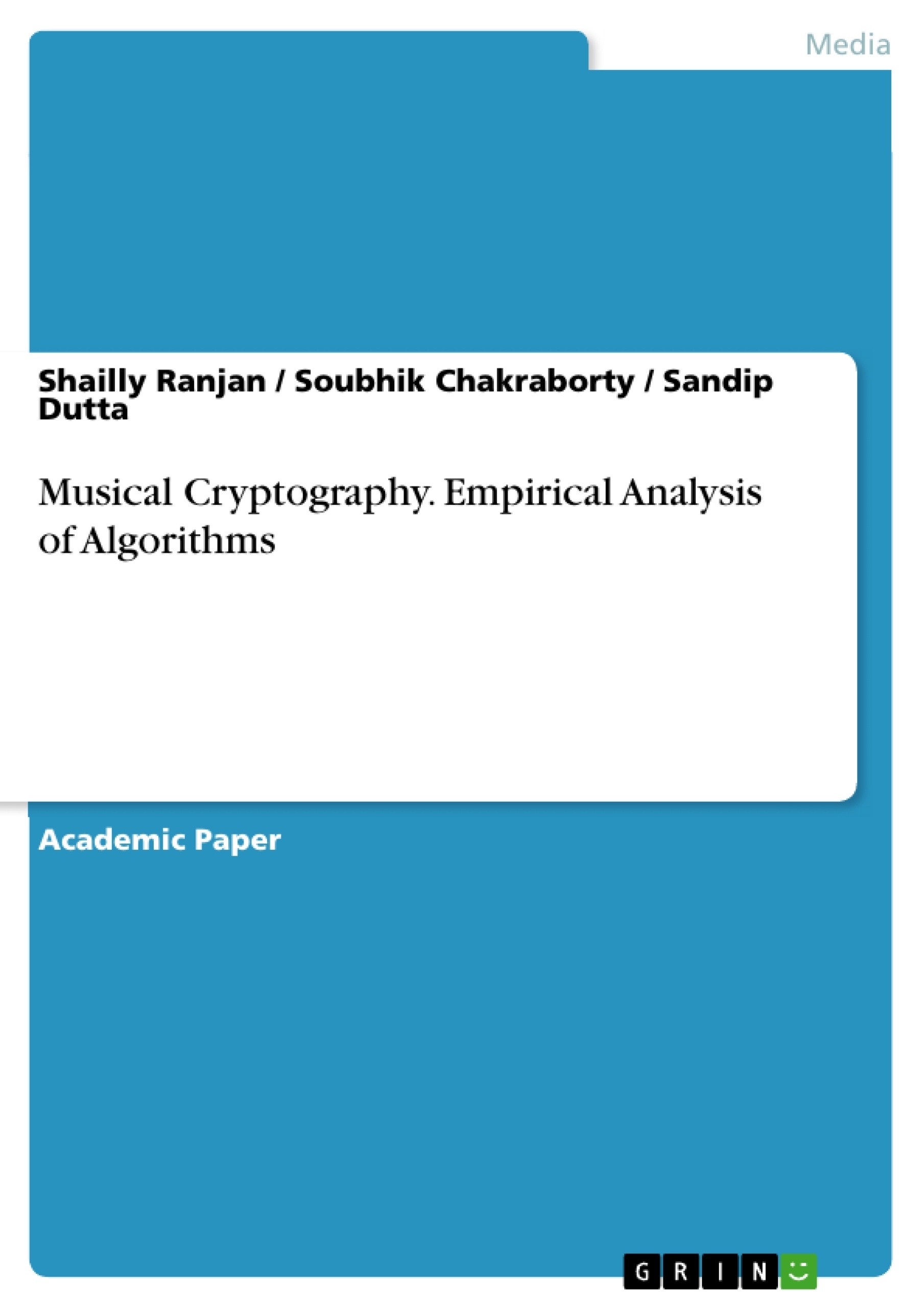With an onset of electronic commerce and portable devices for communication, cryptology has become an exceedingly important science in the present day. The diversity of applications in which crypto-algorithms have to operate have increased and hence the requirement for the efficient algorithms have grown. Confidential information of a government or private agency or department is secured through the use of Cryptography.
Musical properties, for example, notes of which the music is made are not consistent and shift from one arrangement to another. Same tune played by various composers shows a variety in the succession of notes utilized along with different qualities of a musical organization, for example, term of each note and the recurrence at which each note is played. Such a variety can be utilized to encode the message. In this work, we have joined the utilization of Hindustani (North Indian) melodic notes to encode messages and used this method on three ragas to test the robustness of the algorithm with different input size. We have utilized a semi-natural composition procedure to produce note successions of Indian music which would then be able to be utilized as a device for message stowing away. This from the outset place guarantees that the message is avoided the interloper and second it gives another irregular arrangement of notes each time same message is sent. So the very motivation behind a Cryptographic calculation is served. The scrambled message as melodic notes is at that point sent to the planned beneficiary as a melodic structure which helps in opposing the gatecrasher of detecting any classified data that is being sent over the correspondence channel.
Inhalt
1. INTRODUCTION
1.1 CRYPTOGRAPHY
1.2 TYPES OF CRYPTOGRAPHY
1.2.1 SYMMETRIC KEY
1.2.2 ASYMMETRIC KEY
1.2.3 HASH FUNCTIONS
1.3 MUSICAL CRYPTOGRAPHY
1.4 HINDUSTANI MUSIC
2. LITERATURE SURVEY
3. RAGAS
3.1 AAROH & AVROH
3.2 VADI & SAMVADI
3.3 DEERGHA & ALPA NOTES
3.4 NOTES
3.5 WESTERN MUSIC NOTES
3.6 RAAG BHEEMPALASI
3.7 RAGA BAGESHREE
3.8 RAGA MALKAUNS
3.9 RAGA YAMAN
4. METHODOLOGY
4.1 SEMI-NATURAL COMPOSITION
4.2 MARKOV CHAIN
4.3 TRANSITION PROBABILITY MATRIX (TPM)
4.4 SEMI-NATURAL COMPOSITION ALGORITHM (SNCA)
4.5 BAGESHREE RAGA
4.6 ENCRYPTION
4.7 BHEEMPALASI RAGA
5. ANALYSIS OF RAGA
5.1 EMPIRICAL ANALYSIS
5.1.1 BAGESHREE RAGA
5.1.2 BHEEMPALASI RAGA
5.1.3 MALKAUNS RAGA
6. IMPLEMENTATION AND RESULTS
6.1 THEORETICAL ANALYSIS
6.2 EMPIRICAL ANALYSIS
6.3 EXPERIMENTAL RESULTS
7. CONCLUSION
BIBLIOGRAPHY
APPENDIX
- Citar trabajo
- Shailly Ranjan (Autor), Dr. Soubhik Chakraborty (Autor), Sandip Dutta (Autor), 2020, Musical Cryptography. Empirical Analysis of Algorithms, Múnich, GRIN Verlag, https://www.grin.com/document/939103
-

-

-

-
¡Carge sus propios textos! Gane dinero y un iPhone X. -

-
¡Carge sus propios textos! Gane dinero y un iPhone X. -

-
¡Carge sus propios textos! Gane dinero y un iPhone X. -

-
¡Carge sus propios textos! Gane dinero y un iPhone X. -

-
¡Carge sus propios textos! Gane dinero y un iPhone X. -

-
¡Carge sus propios textos! Gane dinero y un iPhone X. -

-
¡Carge sus propios textos! Gane dinero y un iPhone X. -

-
¡Carge sus propios textos! Gane dinero y un iPhone X. -

-
¡Carge sus propios textos! Gane dinero y un iPhone X. -

-
¡Carge sus propios textos! Gane dinero y un iPhone X.

